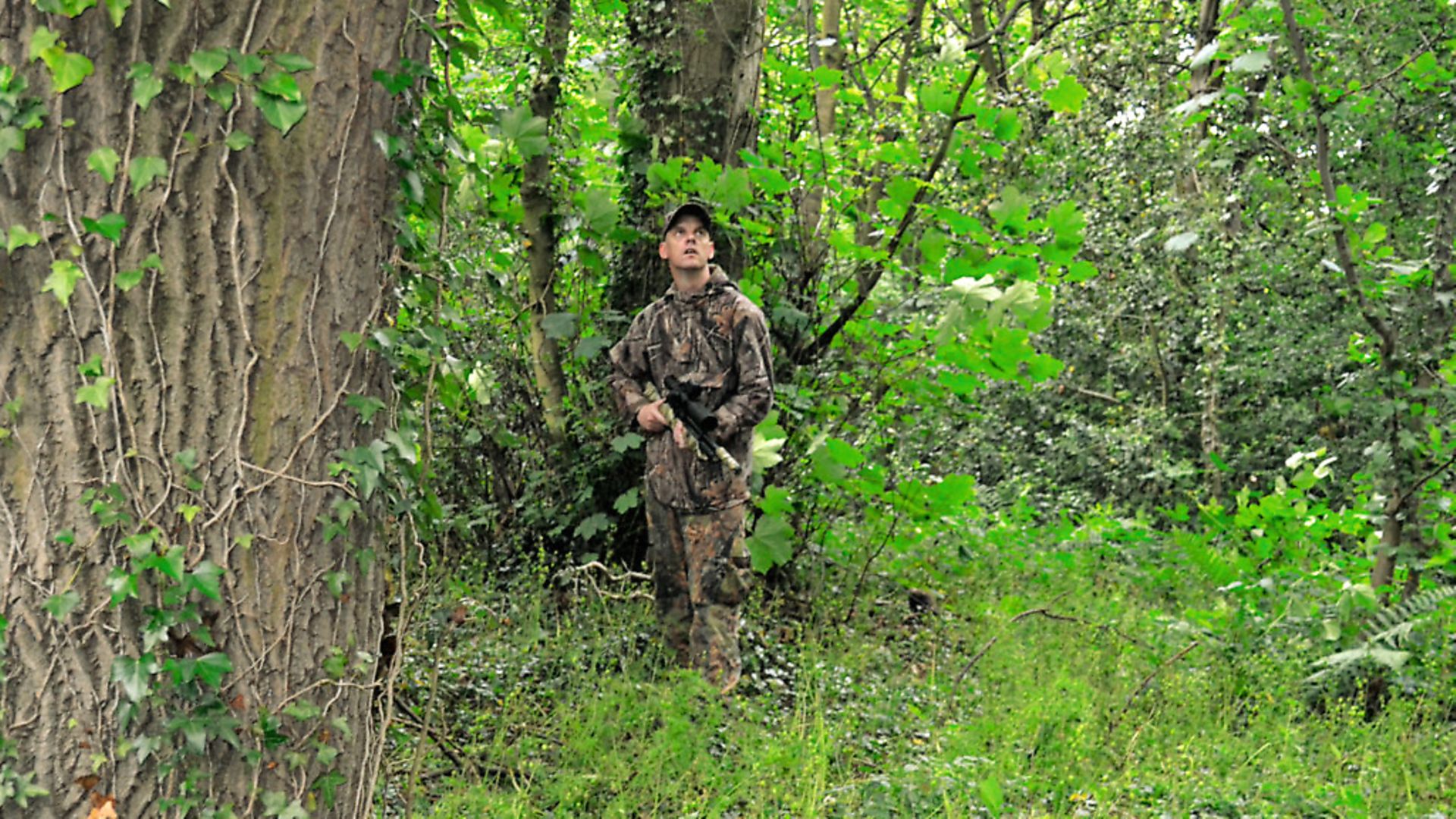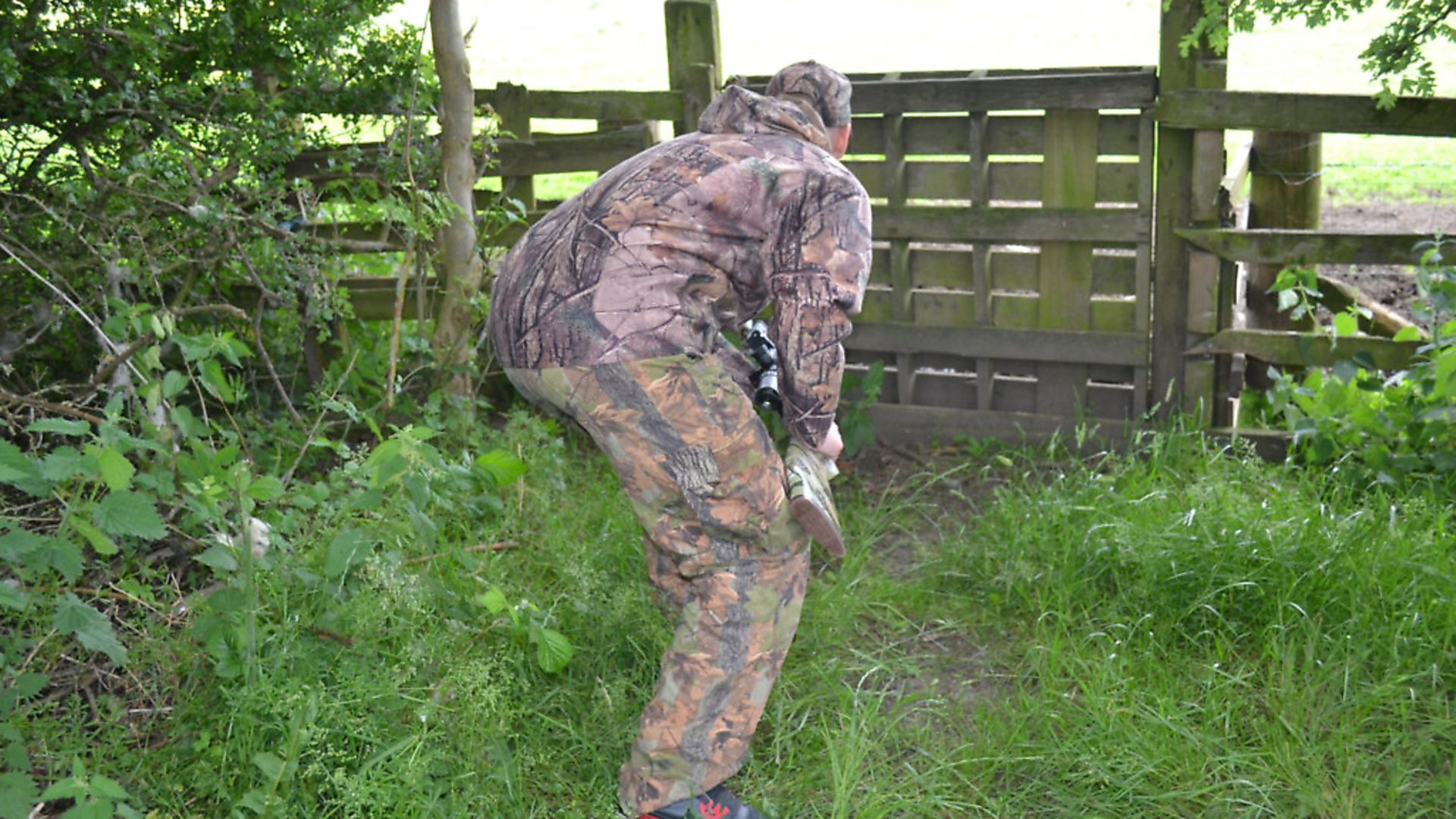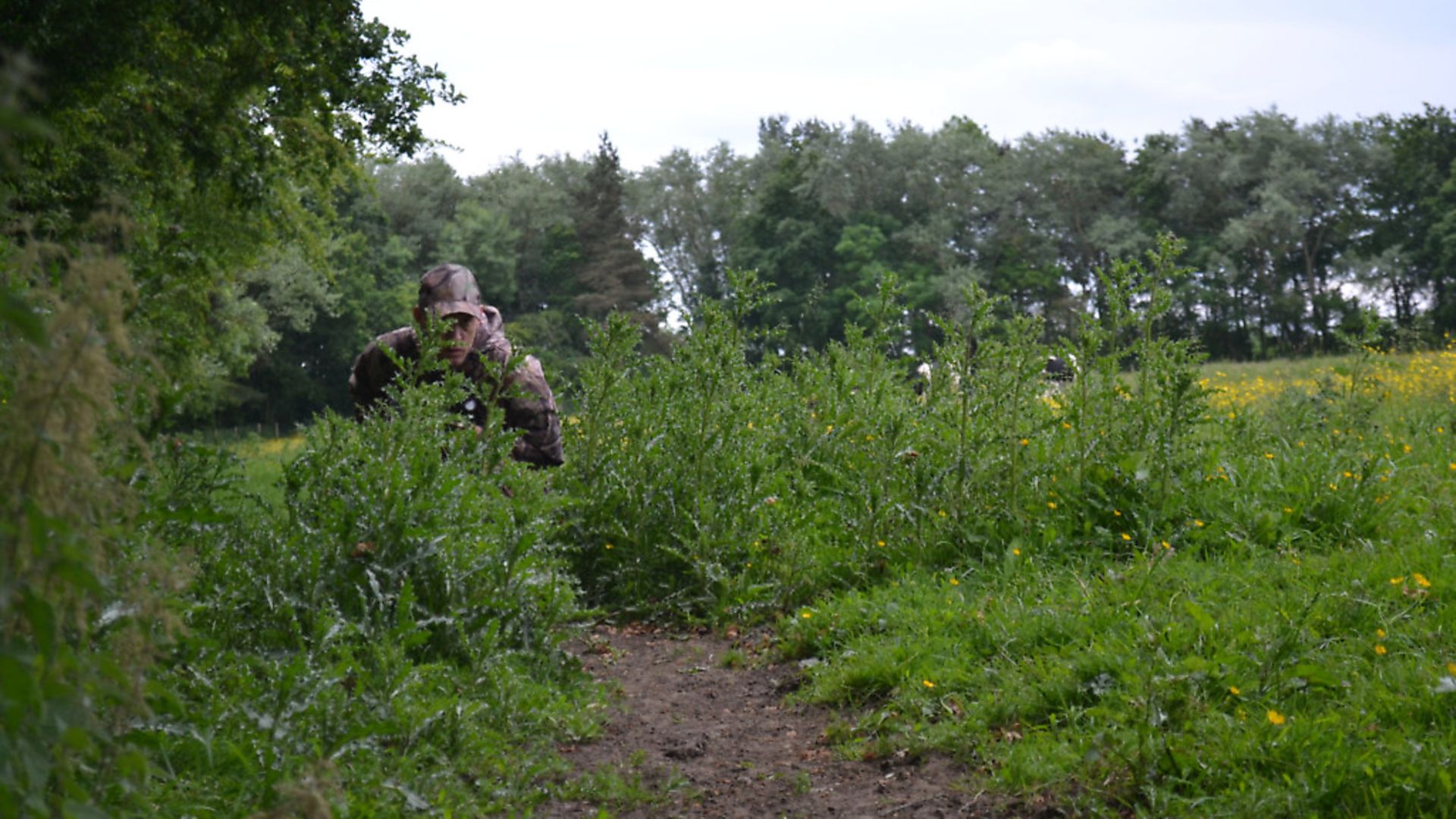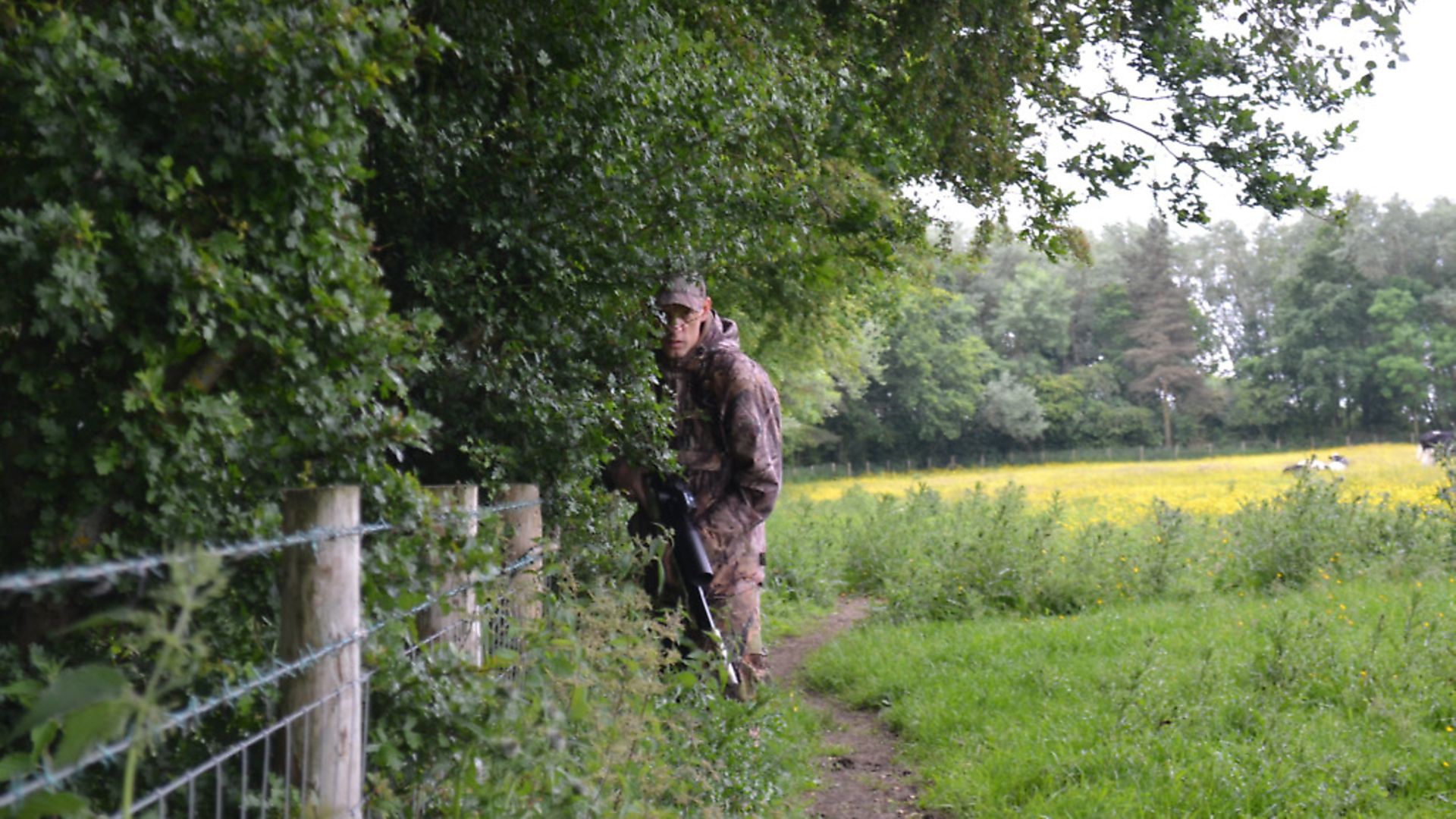Phil Hardman takes us through what he believes to be the purest form of hunting
 credit: Archant
credit: Archant
This month I want to go a little more in depth about some of the tactics used to hunt. It’s easy to talk about stalking, or decoying, but what exactly do they entail, how do we do them, and how can you get the most from each? Everyone will have their own way of hunting, so more experienced hunters might already have a good idea of how to do things, but maybe I have a way that is different, maybe something you didn’t think of. We never stop learning, so just because something works for you, don’t assume that there aren’t ways that could work even better. At the end of the day, what all of us want is to be the most capable hunter we can be, and sharing ideas and information is a great way to do that.
Stalking
Stalking is simply the active pursuit of your quarry. You are moving slowly and using cover and shadows to conceal you as you do. Your eyes are constantly scanning ahead, your ears constantly listening. You are actively tracking your quarry. Stalking is one of my favourite tactics. I enjoy the challenge and find it one of the purest forms of hunting. It requires very little kit, and relies on your skills more than most. The advantage goes to the vermin for the most part because movement is easy to spot, and you have to move, so a bird sitting stationary in a tree has a big chance of spotting you long before you see it.
 credit: Archant
credit: Archant
Discipline and forethought
Stalking require discipline, slow, pre planned movements and plenty of thinking ahead. You must plan your route, you need to be silent, you need to try to visualise where your quarry might be, and move closer without detection. Stalking is the same no matter where you do it, but open fields tend to be a little more forgiving than woodland simply due to the surface over which you move. Woods are noisy, dead leaves and hidden twigs lie everywhere so you must tread carefully, without looking down. It could be likened to walking through a minefield with a blindfold on and you must feel your way because any time spent looking at where you are placing your feet means you are not looking around for potential targets, and sometimes a glimpse is all you will get to tell you what’s up ahead, and what action to take.
 credit: Archant
credit: Archant
Moving stealthily
I place the heel of my foot down first; it’s small and unlikely to land on any large twigs without me noticing. Once my heel is in contact with the ground, I slowly and gently roll my foot forward, little by little allowing more to touch the ground, feeling for anything that might snap or crack as I put more weight on it. If I do feel something, I lift my foot, place it elsewhere, and repeat the process. Thin soles help with this, as do smaller feet I would imagine, and although at first you will probably spend most of your time concentrating on that as you do it, before long it becomes second nature and you do it without even thinking. Grass paddocks are a little easier because you don’t have as many leaves or twigs but you still need to keep your wits about you because long grass can conceal branches and twigs easily and trust me, if there is one, you will find it, just as you’re sneaking up to a rabbit.
 credit: Archant
credit: Archant
Shade is your ally
You need to keep to the shaded areas, they are your friend, and the brighter the day the more important this becomes. Eyes will naturally contract their pupils to compensate for over exposure to light which makes shadows appear even darker, so on a sunny day animals will struggle to see what lurks in the darkness. If you are in the sun, you will be highlighted by it, and the camo you are wearing will no longer be able to break up your outline, you will stand out, from a mile away. Dappled or broken light can work for you if you have to pass through it. The high contrast between the two can break you up, so if there are light patches and you have to cross them, try to not make it full on direct light.
 credit: Archant
credit: Archant
Quietly does it
This rule is fluid and I believe sound, or lack of it, is more important than vision, so if you are forced to move into light to avoid an extremely crunchy patch of leaves, for example, I would. Quarry has to actually see you, they have to be looking in your direction. Sound will travel and they will hear you no matter where they are facing so if you have no option, go with staying quiet, move slowly into the lit area and then back to the shade as soon as you can.
 credit: Archant
credit: Archant
Warnings ahead
As you move forward you may get a warning that something is up ahead, it could be a calling pigeon, it could be a magpie flitting between two trees but whatever it is, what you do next is the most important part of the stalk. First you must freeze, solid; do not move a muscle. You need to evaluate the situation, decide what the target animal is doing, where it is moving, and is it in a state of panic, rest, or is it alert. Once you have established this you can plan your next move, but without this information you are gambling, and the odds are heavily against you. If it’s a calling pigeon it’s obviously relaxed, a flying bird, you will have to decide based on how it is flying, and if you are really lucky, it may head your way, in which case sit tight and use the fact it is moving and you are not, as an advantage.
Getting closer
If you do need to get closer now you need to plan exactly where you will travel, which route will provide you with the cover you need to get within range and which spot you want to try to get to in order to take the shot. In most cases I try to walk directly towards my quarry if I can. There is a phenomenon known in nature as ‘looming’. It’s a hunting tactic used by the dragonfly to sneak up on its targets and it works perfectly. They fly in a totally straight line directly at their chosen victim, because an object coming at you doesn’t seem to move, it grows slightly larger, but it is so subtle it tends to go unnoticed. It isn’t changing relative to the background so it doesn’t trigger a response in the brain of the quarry until it suddenly looms large right on top of its target, and bam! It’s too late.
Looming danger
This effect works on humans too, and is why so many motorcyclists are injured or killed at road junctions on straight roads. Car drivers simply do not realise they are moving at speed or getting any closer because their brains do not recognise the movement coming straight towards them. Any sidewards movement breaks the effect instantly so out in open fields, even if it means leaving cover, I will walk straight at rabbits, slowly, hunched, barely moving my legs, using my front leg to cover the movement of the other as I walk, and you’d be surprised just how close you can get. Because we shoot from a distance, we never get close enough to ‘loom’ so the rabbits can be completely unaware that the human they have been observing from 70 yards away, is now a mere 25, and the shot comes before they have worked out what has gone on.
Elevated challenges
This tactic is less effective against elevated targets because they can track your movement relative to the ground behind you so I tend to only use it against targets that are low down. If you’re up against an elevated target you must use any available cover to try to hide your approach. Even a tree trunk can give you the perfect cover by simply keeping it between yourself and your target as you sneak closer. Once you reach the trunk you can use it to hide yourself as you change stance and get ready for the shot, before slowly poking the rifle around and just enough of your head to get a sight picture through the scope. This minimises the amount of your body that is on show and greatly reduces the chances of you being seen.
Post-shot tactics
Once you make the shot, assuming it’s a good one and you are confident that the animal was dispatched cleanly, it’s tempting to instantly get up and retrieve your prize but now you must use your discipline as a hunter to pause and evaluate the situation before you do anything. Even if your target was the only creature you saw in the area, assume there were others, and if the sound of the shot didn’t unsettle them, the kill and resulting drop to the floor will have. If your target was elevated then its body falling to earth will not have gone unnoticed, and even if it was a rabbit out in the field, anything in the area will now be alert and looking for the danger, and more than likely it will act and try to make it to safety.
Reload your rifle quietly, don’t move, listen, watch and wait. If we use a rabbit as an example, any others in the area will now be trying to work out where you are and could possibly be on their way to the safety of the bushes, the very cover you used to take the shot. Any second one might appear through the grass slowly heading towards you, if it is you want to be ready.
See the unseen
If you shot a pigeon in the woods, there could have been an unseen squirrel nearby that is now on full alert and any second it may appear up a tree trying to get a better look around. Any of the corvid species will tend to come in and mob a fallen comrade so you may get a chance there too, but only if you stay put for a few minutes to suss out what’s going on. If nothing else presents itself you can get up and continue on your way, but keep to the stalking, don’t rush over to pick up your kill, just get it as you pass and continue on your way.
Terrain and time of year
Stalking is so varied, depending on the terrain and the time of year, that it’s really difficult to pin down any one favourite place or species to go up against. Personally, I just love the challenge and the reward of a successful stalk. Seeing a target at 100 yards, planning how I will approach, which cover I will use to do so and where I want to take the shot from, and then trying to put that plan into action, all the while having to adapt as I go, is what hunting is all about for me.
The stalk could be over in 5 minutes, or it could take half an hour, depending on the circumstances but for the duration me and that target animal and any in the immediate area are the only things in the world that matter. Family worries, money troubles, nothing, there is no room in my head for anything else. It’s down to me, and my quarry, a battle of nature that has been played out for a million years. I said earlier it is for me the purist form of hunting and that is why.
When you see a lion or a leopard in the wild stalking their prey, you instantly know what it is they’re thinking, and what it is they are doing. Even if your stalk proves to be unsuccessful, enjoy the chance that you had. There are no wasted stalks; you either make a kill and learn a bit, or you don’t – and you learn a lot. It’s a privilege I intend to enjoy for the rest of my active life.
That’s enough for this month. I’ll see you next month, where I’ll take you through another aspect of my hunting that works for me, and could do the same for you.
__________________________________________________
Read more from Phil Hardman...
Why Phil Hardman loves hunting in the summer
Hunting: A shooting paradise lost
Hardman’s hunting: Seeing the wood through the trees